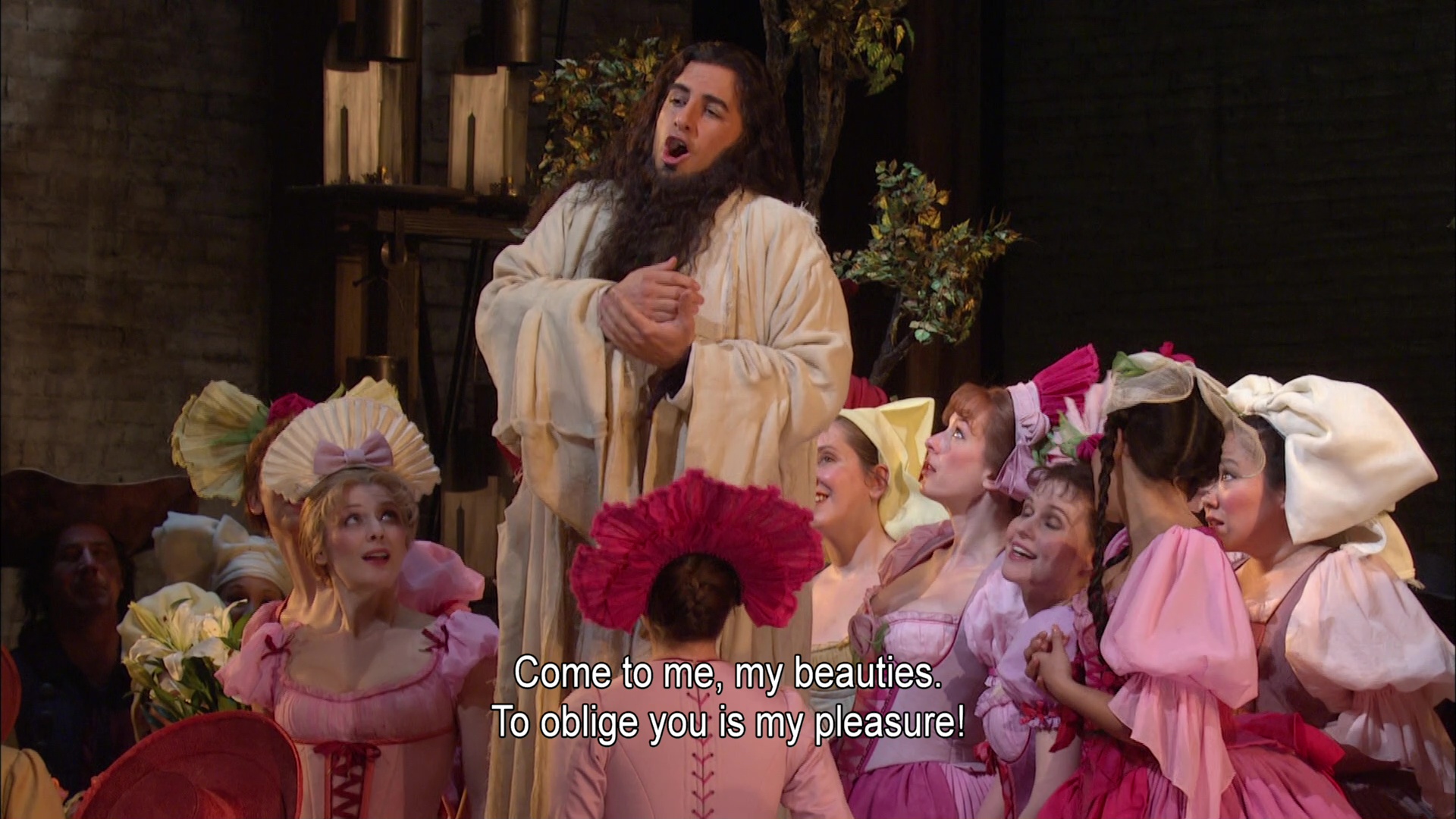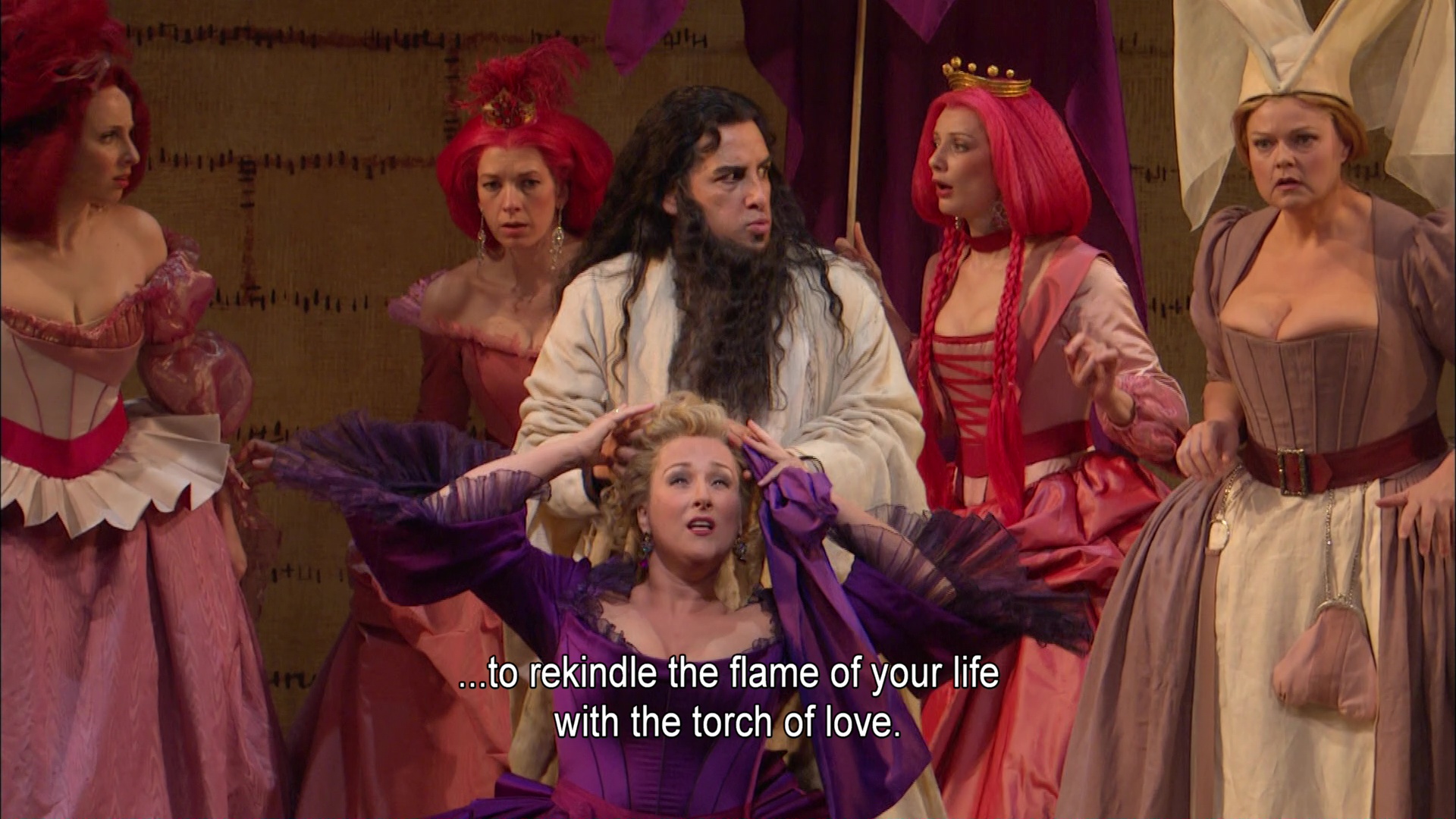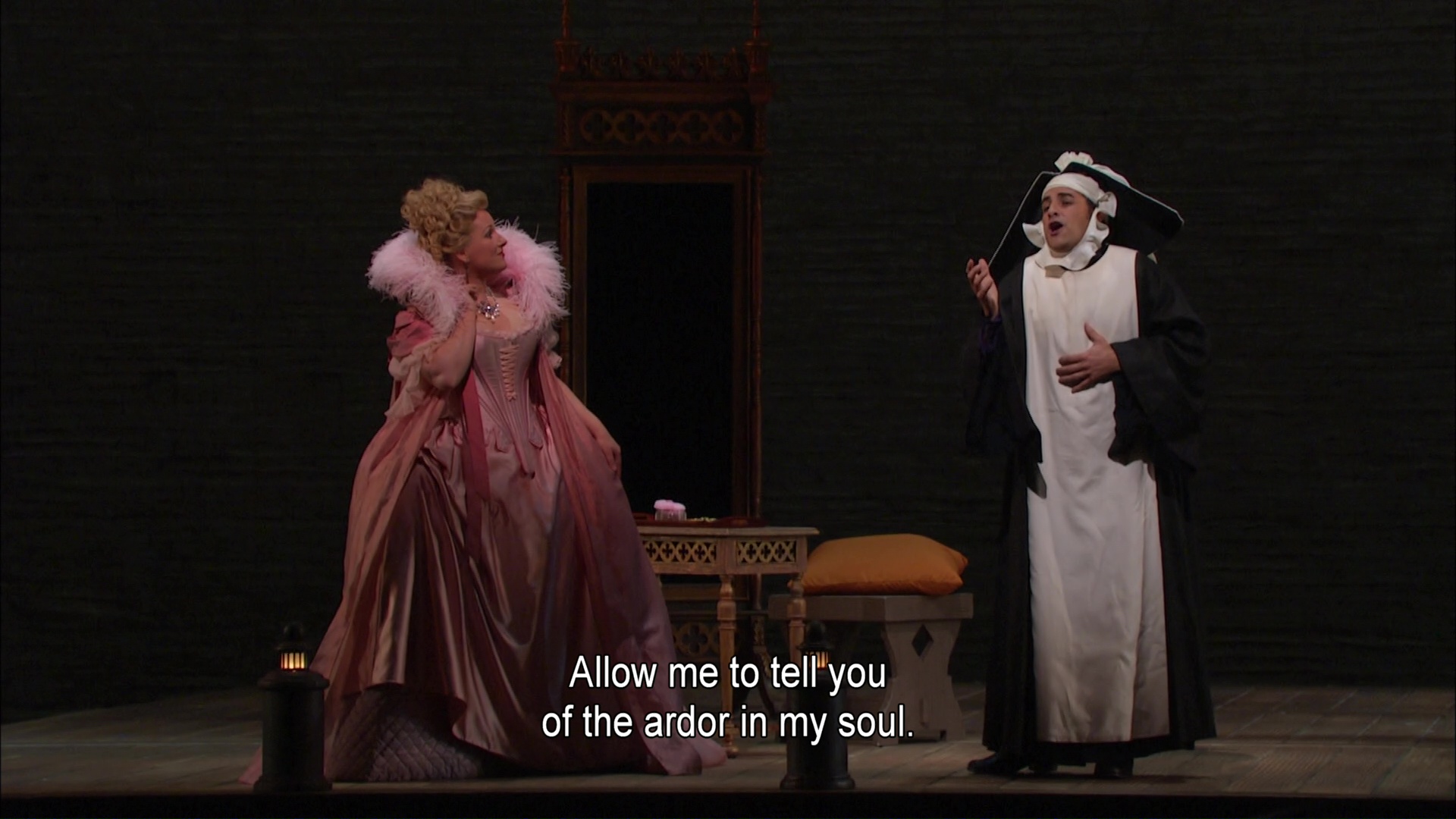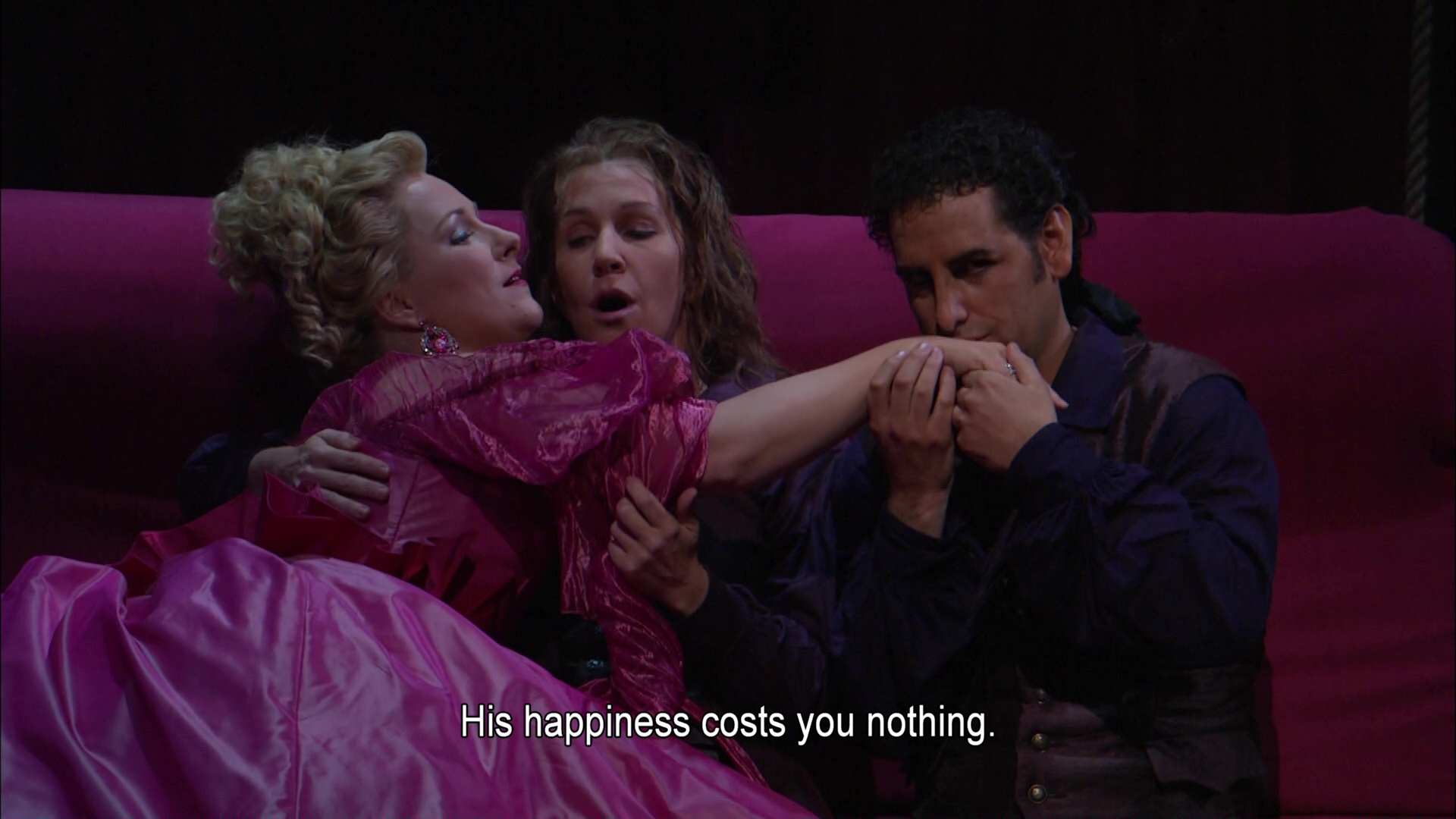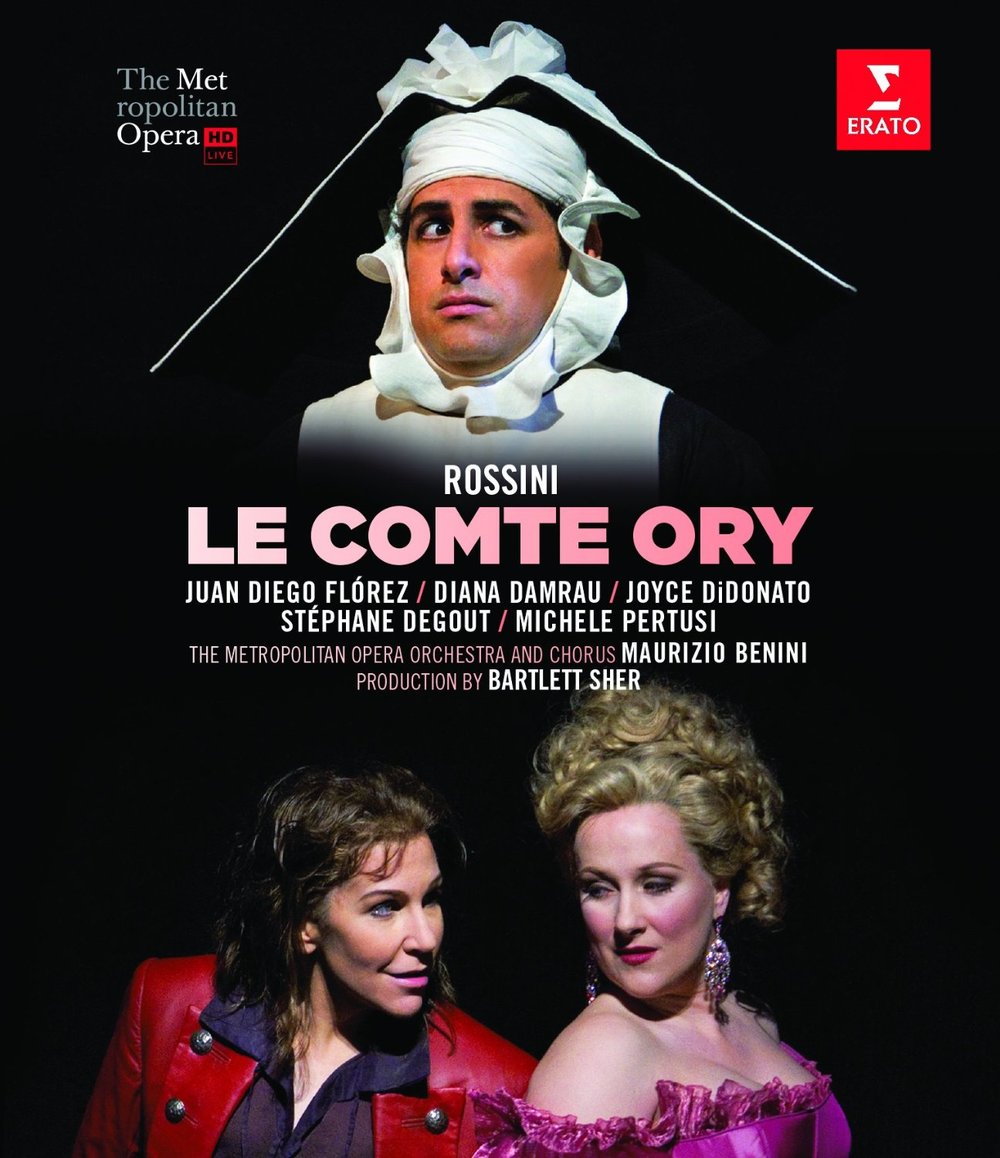
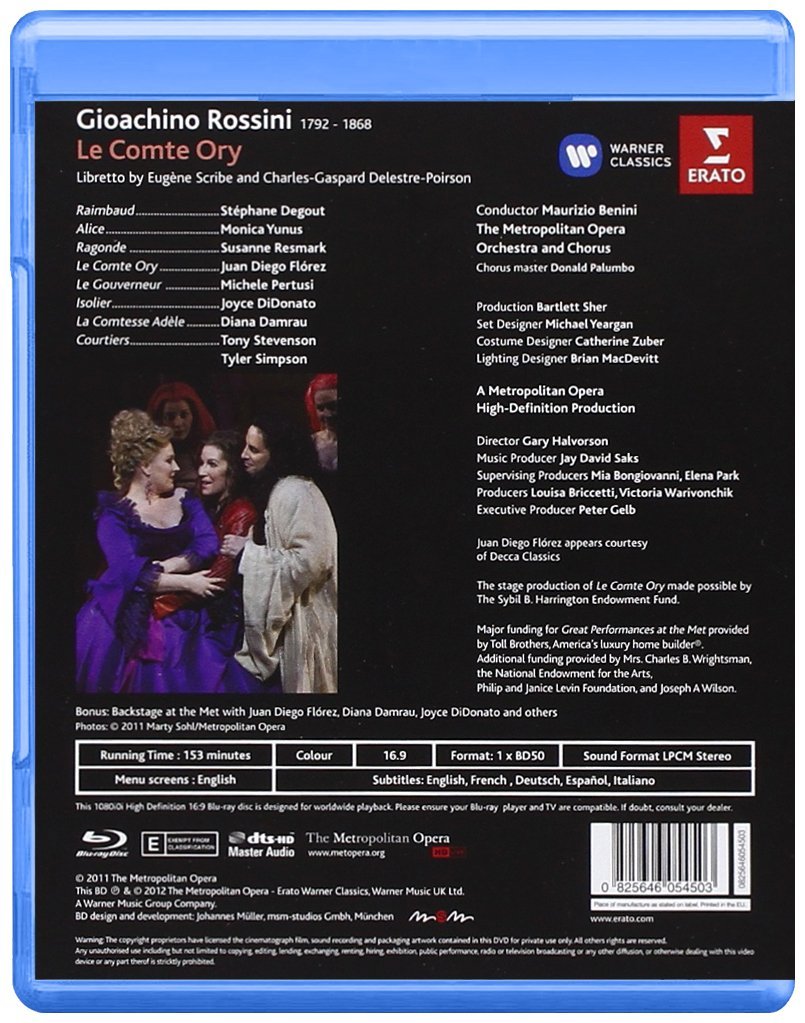
Rossini Le comte Ory opera to libretto by Eugène Scribe and Charles-Gaspard Delestre-Poirson. Directed 2011 by Bartlett Sher at the Met. Stars Juan Diego Flórez (Le Comte Ory), Diana Damrau (La Comtesse Adèle), Joyce DiDonato (Isolier), Susanne Resmark (Ragonde), Michele Pertusi (Tutor), Stéphane Degout (Raimbaud), Monica Yunus (Alice), Tony Stevenson (Courtier), and Tyler Simpson (Courtier). Maurizio Benini conducts the Orchestra and Chorus of the Metropolitan Opera (Chorus Master Donald Palumbo). Sets designed by Michael Yeargan; costume design by Catherine Zuber; lighting design by Brian MacDevitt. Directed for TZV by Gary Halvorson; music produced by Jay David Saks. Supervising Producers were Mia Bongiovanni and Elena Park. Producers were Louisa Briccetti and Victoria Warivonchik. Released 2015, disc has 5.1 dts-HD Master Audio sound. Grade: A
Richard Osborne states in The Grove Book of Operas, 2nd Ed., page 123 that Le comte Ory is both “astonishingly cogent” and “one of the wittiest, most stylish and most urbane of all comic operas.” But it’s not that often performed because it’s so hard to assemble singers who can handle all the difficult roles. In 2011, Juan Diego Flórez was perhaps the best tenor in the world to play the Le Comte. Damrau and DiDonato round out the fantasy-come-true lead cast, and all the supporting singers are superb as well.
It seems the men in the village have left to fight in the Crusades. The village girls and wives have all sworn to live like widows until their men return. This situation is unbearably tempting to the insidious lecher Ory (Juan Diego Flórez). Disguised as a religious hermit, he sets out to seduce as many of the yearning ladies as he can:
Who ever dreamed that the Met has so many beautiful women in its chorus?
Ory especially goes for Alice in pigtails (Monica Yunus):
But his real objective is the beautiful Comtesse Adèle (Diana Damrau) seen below. Adèle is single and alone in the castle as her brother has left for the battlefield leading his men. In solidarity with the women of the village, Adèle has also sworn to lead the life of a widow until her brother returns:
Another stock character is Ory’s page Isolier (Joyce DiDonado in trousers), who is truly in love with the Comtesse. Isolier has the bright idea of approaching Adèle disguised as a woman. This idea appeals also to Ory (as you will soon see):
Ory tells the love-starved Adèle that God wants her to seek a romance:
Much to the consternation of Ory, Adèle declares her affection for Isolier! (The real reason for including this screenshot was to get the 4 wigs on the ladies-in-waiting.)
After several vaudevillian-like plot twists, Ory is unmasked:
In Act 2 the ladies retreat to Adèle’s boudoir in what is perhaps the most flagrant girly show ever staged by the Met:
Where the girls are safe from:
But Ory is ever resourceful and remembers his page’s plan to sneak into the castle disguised as a female pilgrim:
While Ory woos Adele, his men ravish the wine celler:
But Isolier now has the upper hand with Adèle:
Together, Adèle and Isolier are more than a match for Ory, especially in Adèle’s bed:
You know this farce will end when the men of the village suddenly return to their women. Ory graciously admits defeat. To prove he’s a good sport, he also provides us with a moral of the story:
It’s easy to see from these screenshots how ingratiating the designs are in this show. When Franz Liszt conduced this, he said the music “bubbled like champagne” and even served sparkling wine during Act 2. (In Texas, a big margarita also works well while watching this.) It’s full of solo arias for all the voices as well as various combinations of singers right up to an impressive septet ending Act 1. And everyone including the chorus dazzles as actors as well as as singers. Although you can’t tell it from these screenshots, director Sher build a stage within the stage. Mute supernumeraries are constantly seen onstage producing the play within the play. All of these extras are directed by a scabrous-looking actor called “The Prompter” (Rob Besserer) who hovers about the production keeping things going. This stage-within-the-stage approach might seem overly-busy to some, but we think it adds to the bubbly effect.
The print critics back in 2011 were enthusiastic about every aspect of this production. It follows the Met mantra from Bar 1 to the final beat that the story must be clearly and expertly told. And there’s no faking the enthusiastic standing ovations from the audience at curtain calls.
Our only criticism of this recording would be that the video resolution of large-scale views is noticeably soft. This was shot fairly early in the HDVD era to be shown in movie theaters. The Met is a big house. To get sharp large-scale images there, the TV director needs 4K resolution. Grade: A
Here are 3 official Met YT clips for this show (the video on the disc may vary some):
OR

